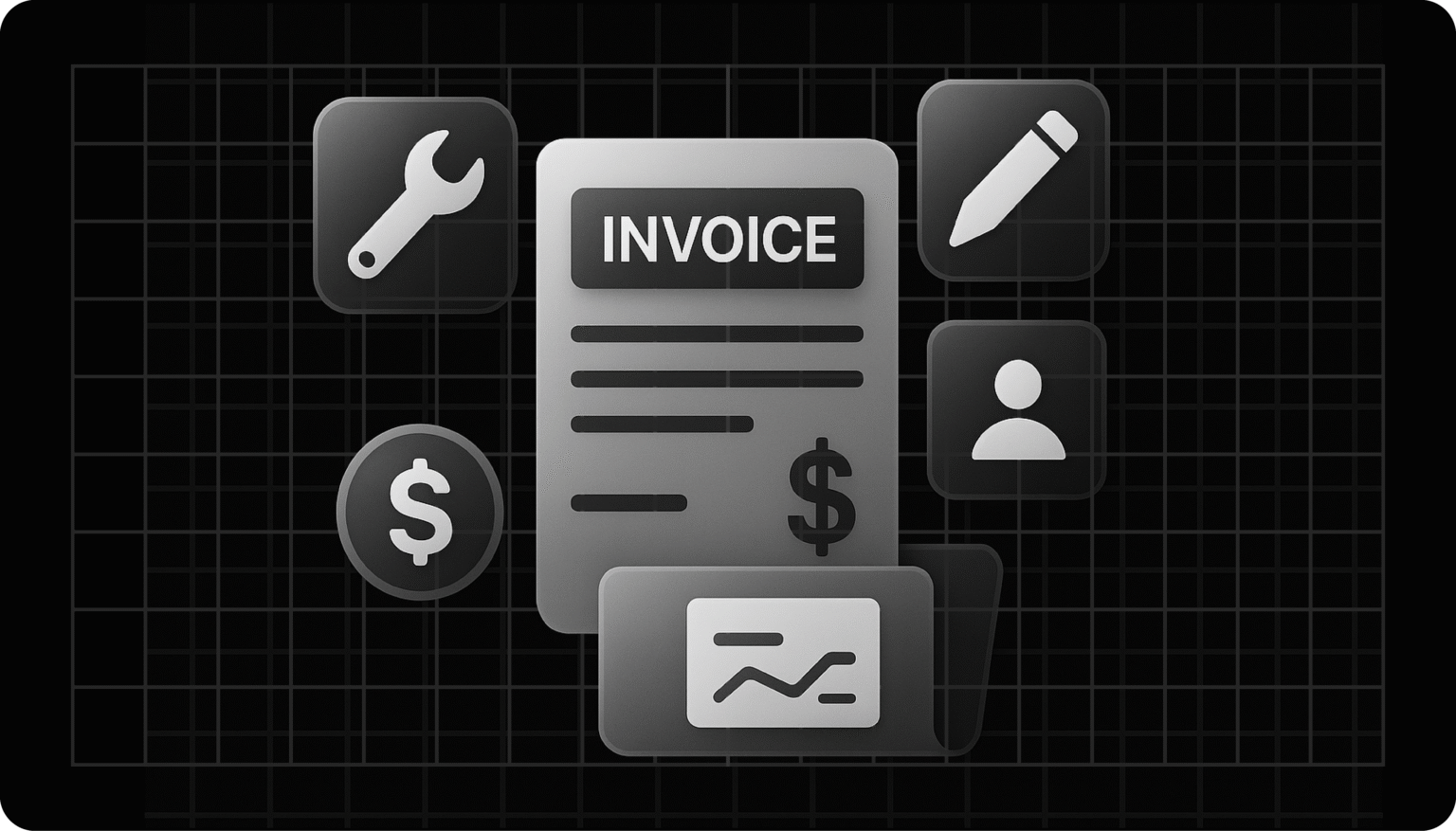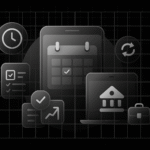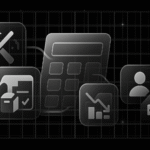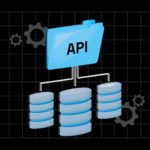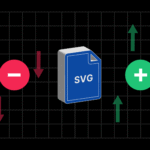If you send the same invoice more than once a month, it’s best to automate it.
Let’s be real: as a developer, your time is better spent building tools, not formatting line items in Google Docs.
If you’re freelancing or working with recurring clients, chances are you’ve copy-pasted the same invoice more than you’d like to admit.
As you are aware, manual invoicing is a tedious task. It’s slow, it’s repetitive, but it’s the kind of problem you can solve with code.
Why not turn your frustration into functionality and income by building an online invoice generator tool?
With a few hours and a clear plan, you can have a clean and effective invoice generator created on our Microapp platform and start earning passive income from something that can help you and hundreds of others.
💡 Let’s turn your next side project into an innovative, simple tool that earns while you sleep.

How to Build an Online Invoice Generator Tool And Do It in an Afternoon
Let’s break it down for you. You can build your online invoice generator tool in 3–5 hours:
1. Define Your Invoice Layout
Use basic HTML/CSS to build your invoice structure with placeholders for dynamic content.
2. Store User Inputs
Use localStorage for a no-backend MVP, or plug into Firebase/Supabase if you want persistence across devices.
3. Generate PDFs
Utilize libraries such as html2pdf.js or jsPDF to enable downloadable invoices.
4. Add One-click Send
Allow users to copy a link or use mailto: to launch their email client with the invoice attached or linked.
5. Deploy & Upload
Use Netlify or Vercel to deploy. Then upload to the Microapp platform—an app store built specifically for lightweight web tools.
No backend framework needed. No user authentication is required unless you want it. A helpful product that addresses a pain point.
6. Upload an App Without Coding (Optional)
Microapp even supports uploading no-code apps built with tools like Glide or Softr. Or you can still use our creator platform to create and upload your app.
What a Lightweight Invoice App Should Do
When you develop a good online invoice generator tool, it doesn’t need to be over-engineered. You’re not building QuickBooks. You’re solving a micro problem with recurring invoices with a microapp.
Here’s what your tool should handle:
- Client Info Storage: Save names, emails, rates, and invoice frequency.
- Template Reuse: Let users define reusable invoice layouts.
- Auto-Date and Numbering: No more mental math on invoice numbers or dates.
- Download & Send: Export as PDF and send via email or a simple link.
- Payment Links (Optional): Include a static payment link (e.g., PayPal, Stripe).
These are the core features you can build with HTML/CSS, a lightweight JS framework, and a backend like Firebase, Supabase, or even Google Sheets for MVPs.
And the best part? You don’t need to build a complete billing system. You can keep it minimal. Keep it niche. That’s how you develop and sell niche tools that stand out.
The Frustration of Manual Invoicing
Manual invoicing isn’t just time-consuming; it’s expensive, error-prone, and a distraction from what you want to do.
If you’re unsure about what constitutes an invoice or what details it should include, refer to our guide on what an invoice is to get a solid understanding before you start building.
📉 Studies show that businesses spend up to 20 hours per month processing 50 invoices manually. That adds up to nearly $12,000 a year in labor costs at average freelance dev rates (Chequepay).
Even worse, over 60% of invoice errors stem from manual data entry, which can take 3–4 hours to correct, ultimately harming your cash flow and reputation.
On average, it takes more than 15 minutes to create a single invoice manually. Automation can reduce that by 80% or more, giving you back hours each week (ResolvePay).
And all this delay means your clients pay more slowly. Manual invoicing increases your Days Sales Outstanding (DSO) by 5–10 days, resulting in thousands of dollars in unpaid revenue.
As a developer, you’re in a great position: you can build the tool you need and make it useful for others as well.
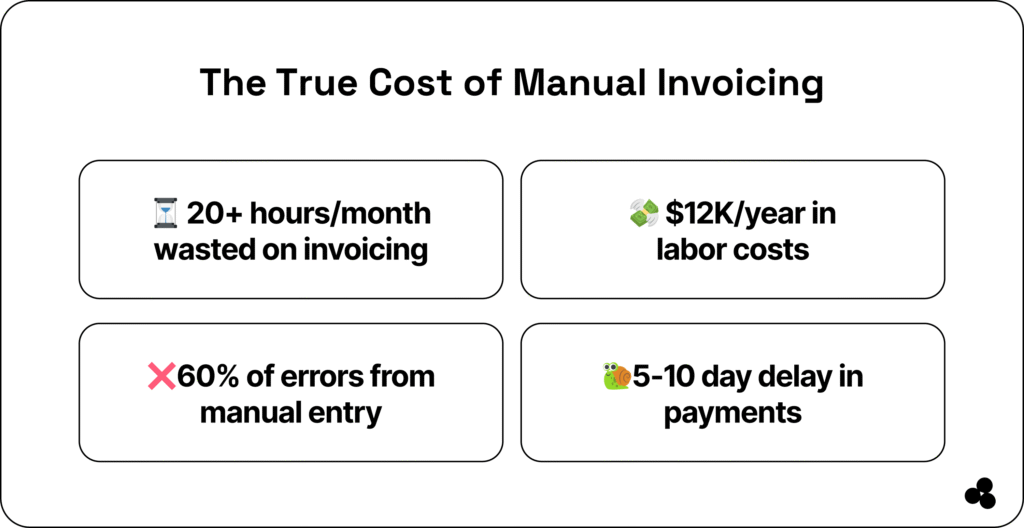
Tips to Reduce Manual Invoicing Friction
Add a helpful “tips” box or small section with practical advice your readers can apply immediately:
- Standardize Invoice Formats: Use consistent templates with placeholders to eliminate manual layout formatting.
- Automate Client & Rate Storage: Store client info and pricing once, then reuse it automatically for recurring sends.
- Use PDF Generation Libraries: Leverage tools like jsPDF or html2pdf.js to auto-export clean invoices.
- Integrate Simple Reminders: Set browser notifications or basic cron-based reminders for due invoices, even before completing the scheduling process.
- Track Status Lightweight: Use localStorage or simple backend logs to know if an invoice was generated or emailed—avoid blind guesswork.
- Self-audit Early: Build in checks, such as validation for line-item totals and invoice numbers, to reduce errors before sending.
These are practical steps you can script or build in during your initial afternoon prototype—the kind of improvements developers love to incorporate early.
Why This Matters
By weaving real data and actionable tips into your article:
- Credibility increases—you’re not just saying manual invoicing sucks, you’re proving it.
- SEO authority improves—empirical content helps ranking for transactional queries.
- Developer trust grows as they see that the tool you’re teaching them to build addresses real, measurable problems.
Customize It for Freelancers, Retainers, or Agencies
The best part? Once your online invoice generator tool works, you can tailor it to specific user types:
- Freelancers: Offer simplified one-page invoices with default service items.
- Agencies: Add client branding (logos, colors) or support multiple clients.
- Retainers: Include pre-set schedules or description templates (“Monthly SEO work – July”).
Start small, then grow based on honest feedback. That’s how you create microapps—and avoid feature bloat.
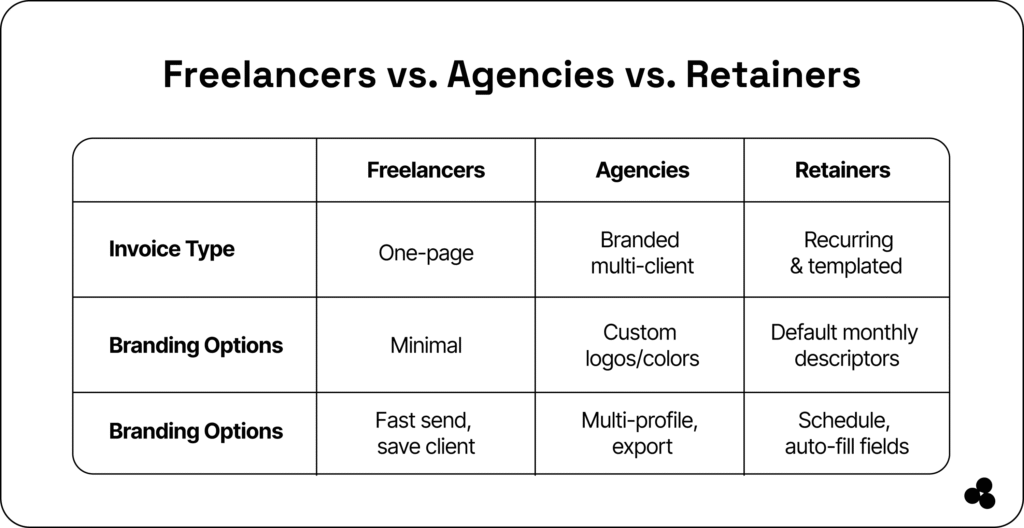
Launch It, Share It, Earn From It
Once your online invoice generator tool is ready, share it where it matters.
The Microapp app store is a curated marketplace for micro-SaaS tools. You don’t need a marketing campaign or viral tweet thread to get attention.
Just submit your project, define a simple pricing model, and let your tool speak for itself.
Use the opportunity to:
- Monetize your web app
- Earn money from side projects
- Build and sell niche tools
- Create passive income as a developer
You’re not just solving your invoicing headache; you’re helping thousands of freelancers who are tired of the same process. That’s leverage.
🚀 Launch your invoice tool today on Microapp, and let it work while you don’t.
